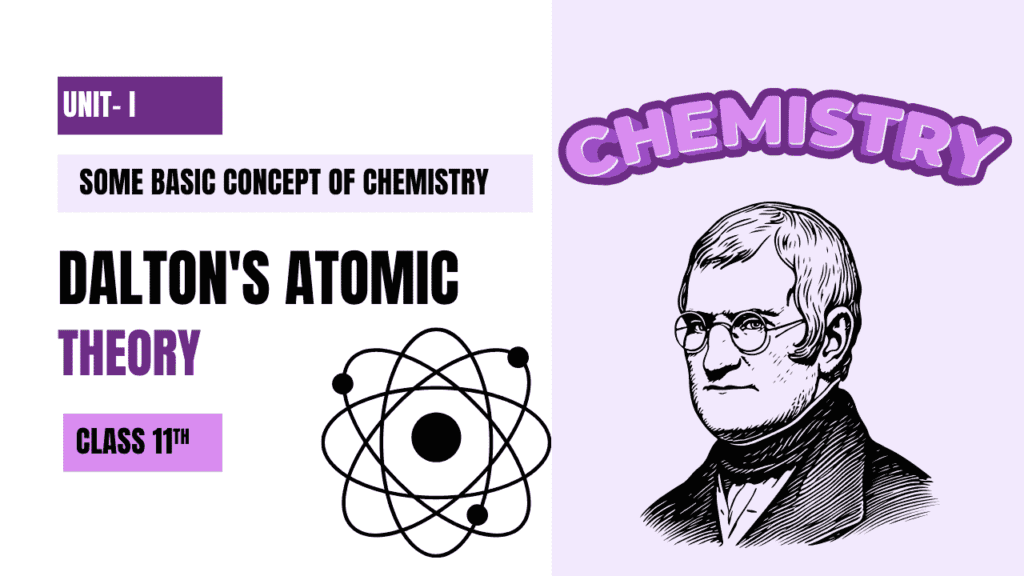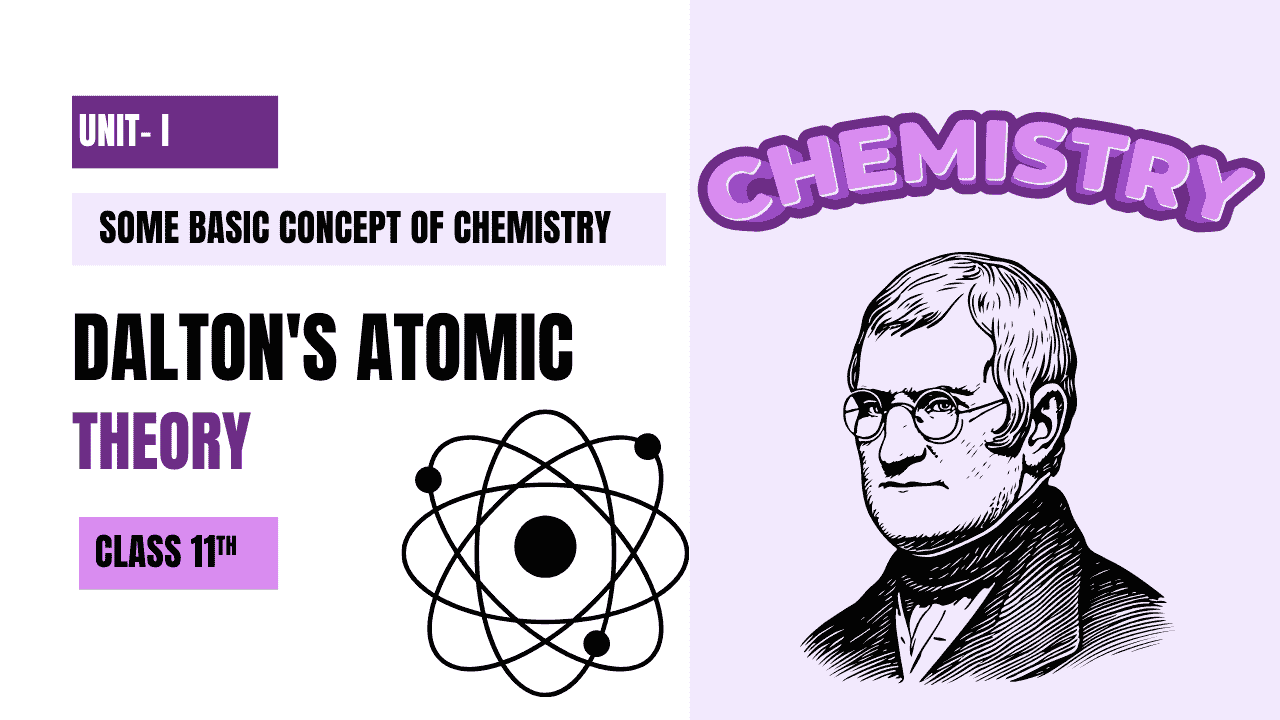
Dalton’s Atomic Theory
Unit-I: Some Basic Concepts of Chemistry | JKBOSE Class 11
Historical Development
John Dalton (1766-1844) proposed his atomic theory in 1808, revolutionizing chemistry by providing a theoretical foundation for:
- Law of Conservation of Mass (Lavoisier, 1789)
- Law of Definite Proportions (Proust, 1799)
- Law of Multiple Proportions (Dalton, 1803)
Five Postulates (Detailed)
All matter is composed of extremely small, indivisible particles called atoms.
All atoms of a given element are identical in mass, size, and chemical properties.
Compounds form when atoms of different elements combine in fixed, simple whole-number ratios.
Atoms rearrange during chemical reactions but are neither created nor destroyed.
Compounds have properties different from their constituent elements.
Limitations (Modern Discoveries)
Atoms can be divided into protons, neutrons, and electrons (discovered 1897-1932).
Atoms of same element can have different masses (e.g., ¹²C and ¹⁴C).
Atoms can be converted to energy in nuclear processes (E=mc²).
Same element exists in different forms (e.g., diamond vs graphite).
Different elements can have same mass number (e.g., ⁴⁰Ar and ⁴⁰Ca).
Expected Exam Questions
Structure:
1. Introduction (1 mark)
2. All 5 postulates with examples (3 marks)
3. Any 3 limitations (1 mark)
Key Points:
– Fixed atom ratios in compounds
– Example (H₂O always 1:8 mass ratio)
– Contrast with mixtures
